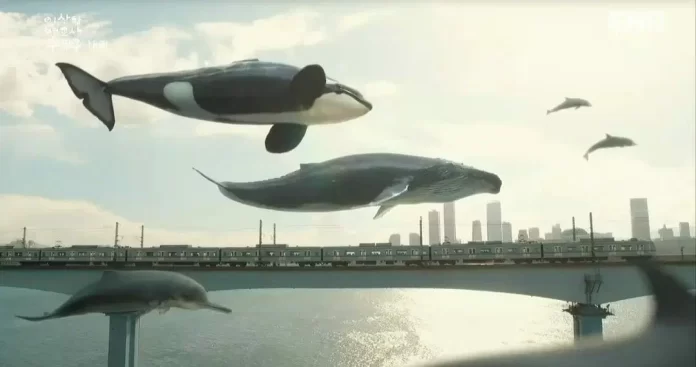Whales are associated with compassion and solitude, and knowledge of both life and death.
Whales play special roles in the history and culture of Cadiz City in Negros Occidental. It is called the “City of Whales.”
Murals of whales are plastered on walls of schools and is the centerpiece of the fountain at the city plaza.
The city’s annual festival, “Dinagsa,” every last weekend of January, was coined after an event that occurred on May 7, 1967, when several whales were stranded on the city’s shores, each measuring at least 40 feet long and eight feet tall.
“Dinagsa” comes from a Hiligaynon word “dagsa,” meaning to gather together, driftage, or to come in groups.
A year after the 1967 incident, pirates attacked Cadiz on December 31.
The city’s version of “Ati-Atihan” began in 1972 in honor of the Sto. Niño de Cadiz that the locals believe performed miracles to protect the city from pirates. In 2002, the festival was dubbed the “Dinagsa”.
The city’s “Ati-Atihan” street dancing competition carries themes with whales, pirates, and the Sto. Niño.
“Ati-atihan” means “making like Atis,” or pretending to be like the natives that once inhabited Negros.
The “Lamhitanay sa Dalan” is one of the unique features of Dinagsa wherein people in the streets paint each other’s faces, making one a human canvass.
An old painting of Moby Dick still hangs in our house. I consider it as my first encounter with whales.
It was in my literature class at the University of the Philippines where I made a review of the book “Moby Dick or The Whale,” which is an 1851 allegorical classic novel by American writer Herman Melville.
It narrates the quest of Captain Ahab of the whaling ship Pequod for vengeance against Moby Dick, the giant white sperm whale that crippled the man during the ship’s previous voyage.
There have been a number of adaptations of Moby Dick in various media, including the first production in 1926 of a silent film titled “The Sea Breast.”
A two-act play by Orson Welles was staged from June 16 to July 9, 1955, in London and starred Christopher Lee.
Some interpret the whale as the powerful force of nature, which humans have long battled and tried to conquer. For Captain Ahab, the white whale symbolizes all that is evil in the world, and therefore, it must be destroyed.
The international coffee chain Starbucks got its name from a character in Moby Dick — the first mate who was the only man aboard who resisted Ahab’s plan to devote the ship’s mission to hunt and kill the white whale.
To Starbuck, the whale would provide oil, like any other whale. He believes that nature is there to be exploited for profit.
In the Korean television series “Extraordinary Attorney Woo,” the main character loves whales.
It follows the story of Woo Young Woo, a lawyer with autism spectrum disorder, working at a large law firm. The drama depicts her growth as she solves cases using her remarkable memory and outside-of-the-box thinking.
Rather than a lightbulb, whales occasionally appear via her imagination to bring her comfort or when she has a “eureka” moment.
Her condition brought her to a fixation with whales because they can swim in the ocean without any limitations.
Whales also became entangled in the landmark case oddly labeled “Resident Marine Mammals of the Protected Seascape Tañon Strait et. al. V. Secretary Angelo Reyes et al.”(G.R. No. 180771 April 21, 2015).
Collectively referred to as the “Resident Marine Mammals,” the petitioners are the toothed whales, dolphins, porpoises, and other cetacean species, which inhabit the waters in and around the Tañon Strait, a body of water separating Negros and Cebu.
They are joined by environmental lawyers of Oceana Philippines as their legal guardians and as friends (“the Stewards”) who empathize with, and seek the protection of, the marine species.
Environmental lawyers insisted that the oil exploration in the area harmed the animals and most of them had moved to another location.
The Supreme Court ruled that oil exploration, development and exploitation of resources by Japan Petroleum Exploration Co. Ltd. (Japex) in Tañon Strait was unconstitutional and violated laws, such as the National Integrated Protected Areas System act of 1992.
The court also ruled that the whales and other sea mammals had no legal personality to sue — however, citizens can sue in their behalf.
The lawyers said that the ruling should serve as a reminder to national agencies to perform their mandates of environment protection, and also protect the rights of the people. This should also deter them from ecologically destructive acts, especially in protected areas like Tañon Strait.
Dennis R. Gorecho heads the seafarers’ division of the Sapalo Velez Bundang Bulilan law offices. For comments, e-mail [email protected], or call 09175025808 or 09088665786.









